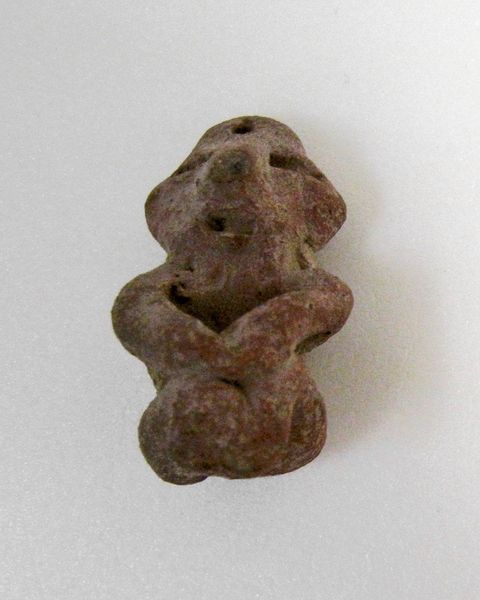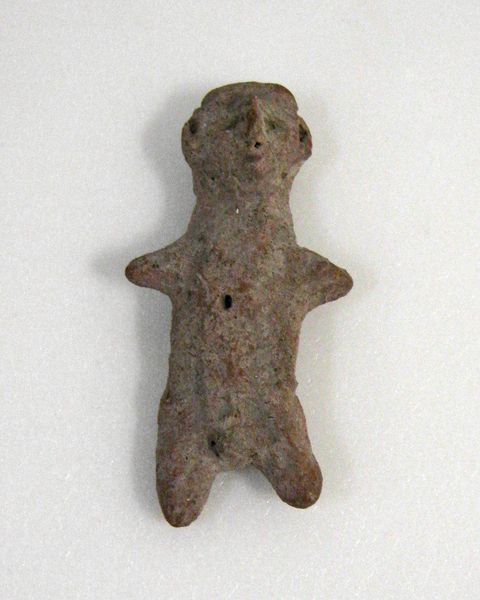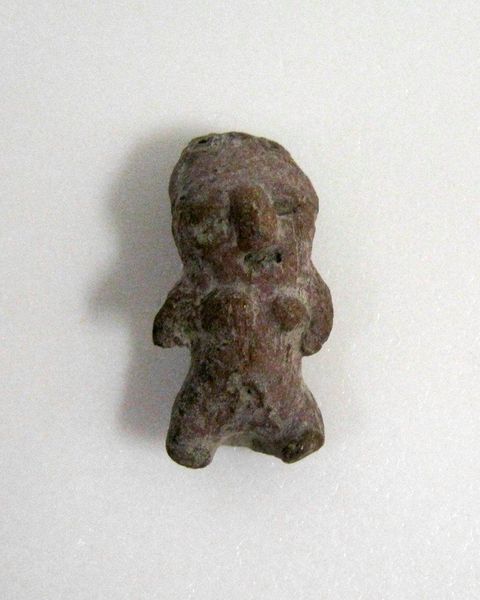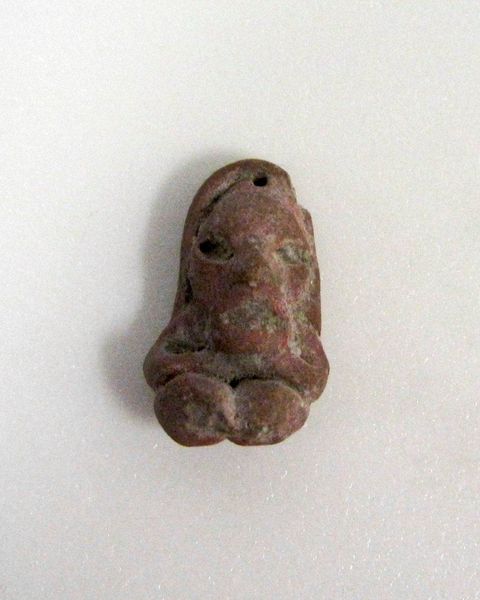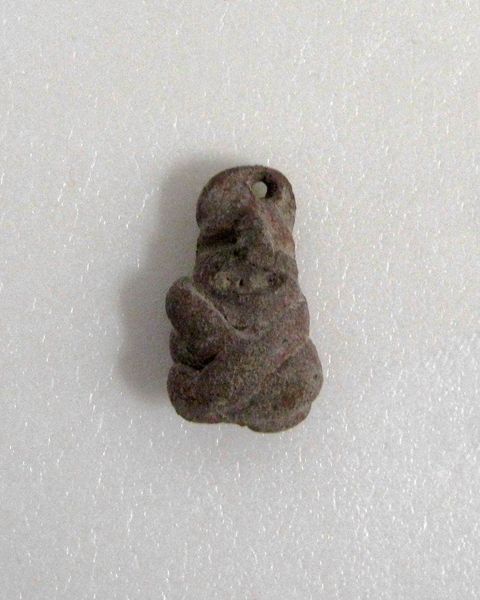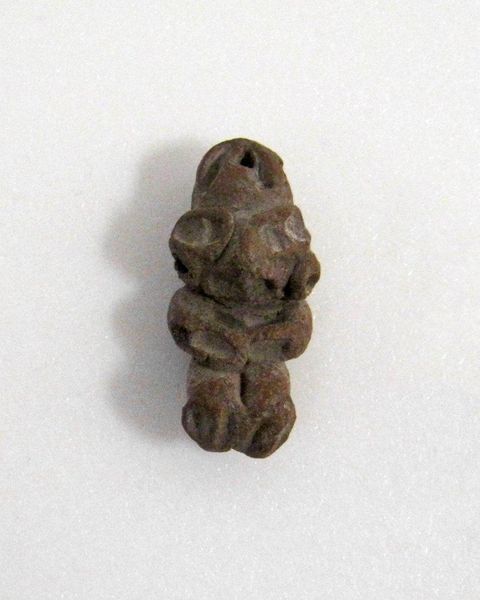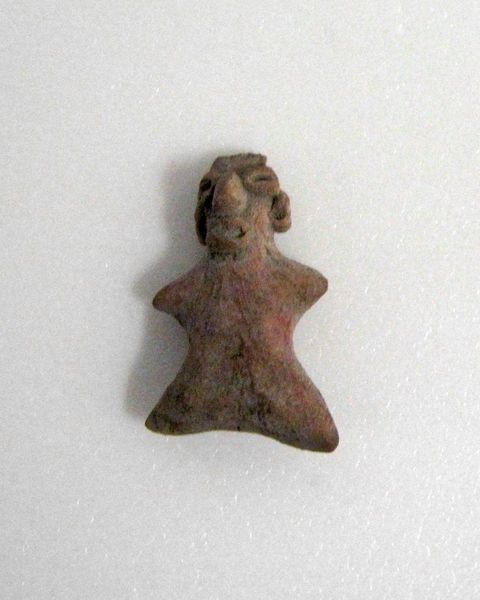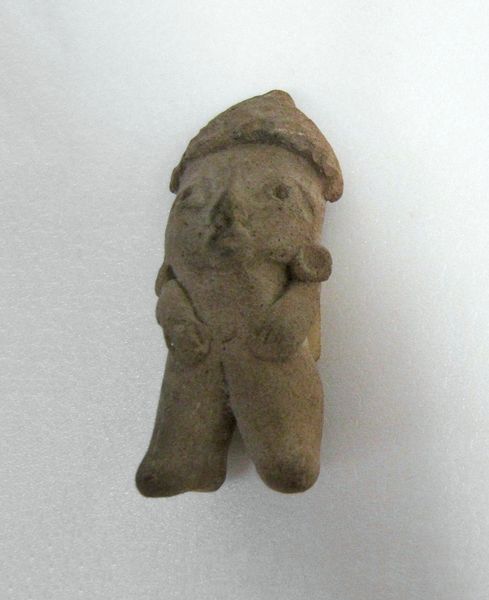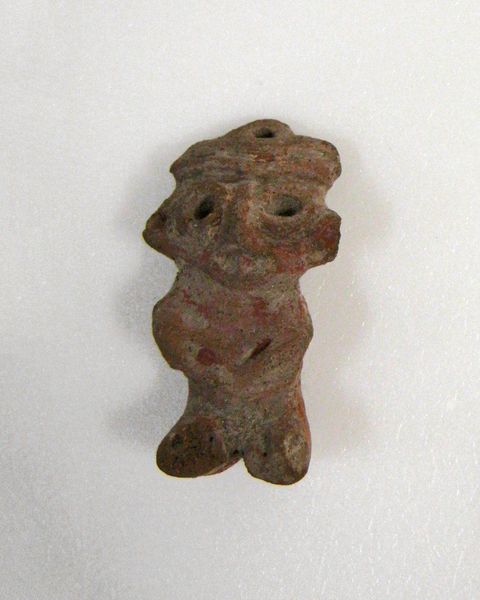
ceramic, earthenware, sculpture
#
sculpture
#
ceramic
#
figuration
#
form
#
earthenware
#
sculpture
#
indigenous-americas
Copyright: Public Domain
Editor: Here we have a miniature ceramic figurine from Tlatilco, dating back to around 1500. There’s something so evocative in its simplicity. The stylized human form, almost like an abstracted symbol, strikes me as both ancient and strangely modern. What do you see in this piece? Curator: The image immediately suggests to me a primal understanding of form, rendered with such deliberate emphasis. Notice the way the artist reduces the human figure to essential shapes – a clear head, a defined torso, and powerful legs. Do you feel how that simplification amplifies the underlying idea, almost a seed of human presence? Editor: I do. It feels like a distilled representation, the very essence of "human." It reminds me a bit of early Cycladic figures, where forms are simplified for expressive purposes. But what does that specific simplification convey, here? Curator: Exactly! It connects us with a shared history, doesn't it? In cultures like Tlatilco, these figures were imbued with complex beliefs – the enduring human form as a carrier of the soul, a representation of fertility, or maybe even a vessel for ancestors. Note the care put into the head and lower body, perhaps indicating their symbolic weight. Do you agree? Editor: I can see that. The almost exaggerated legs do stand out, especially compared to the torso. It's less about perfect anatomy, and more about…significance. Thank you, that perspective helped me a lot to connect it to possible interpretations beyond what I was seeing on the surface. Curator: Absolutely. Considering how these images resonate throughout time truly enriches our understanding. These little statues were potent objects with much to tell.
Comments
No comments
Be the first to comment and join the conversation on the ultimate creative platform.


